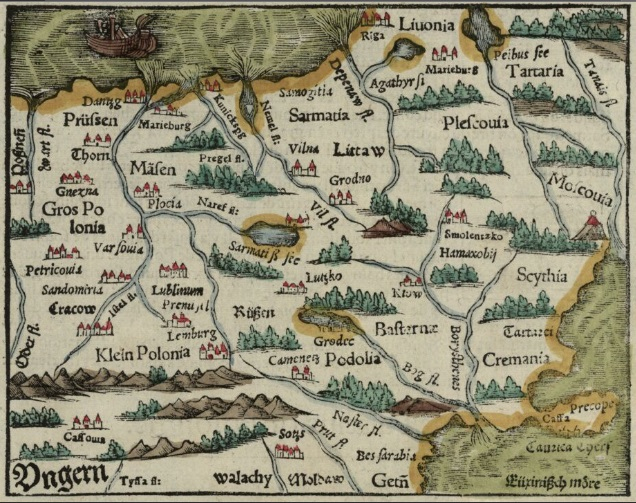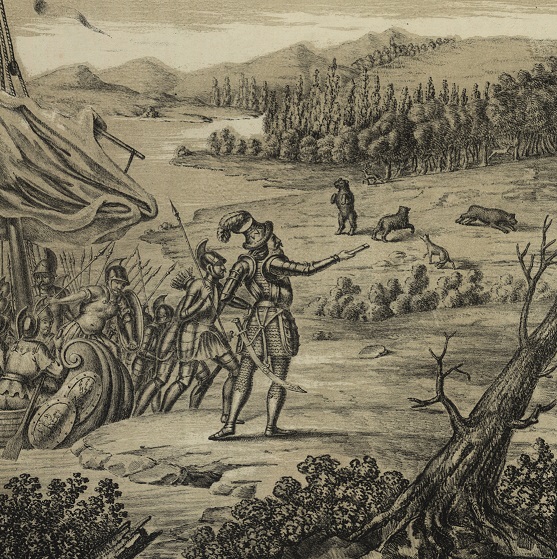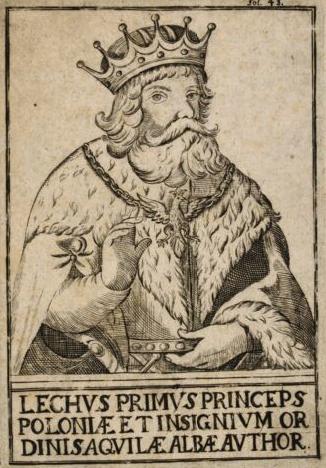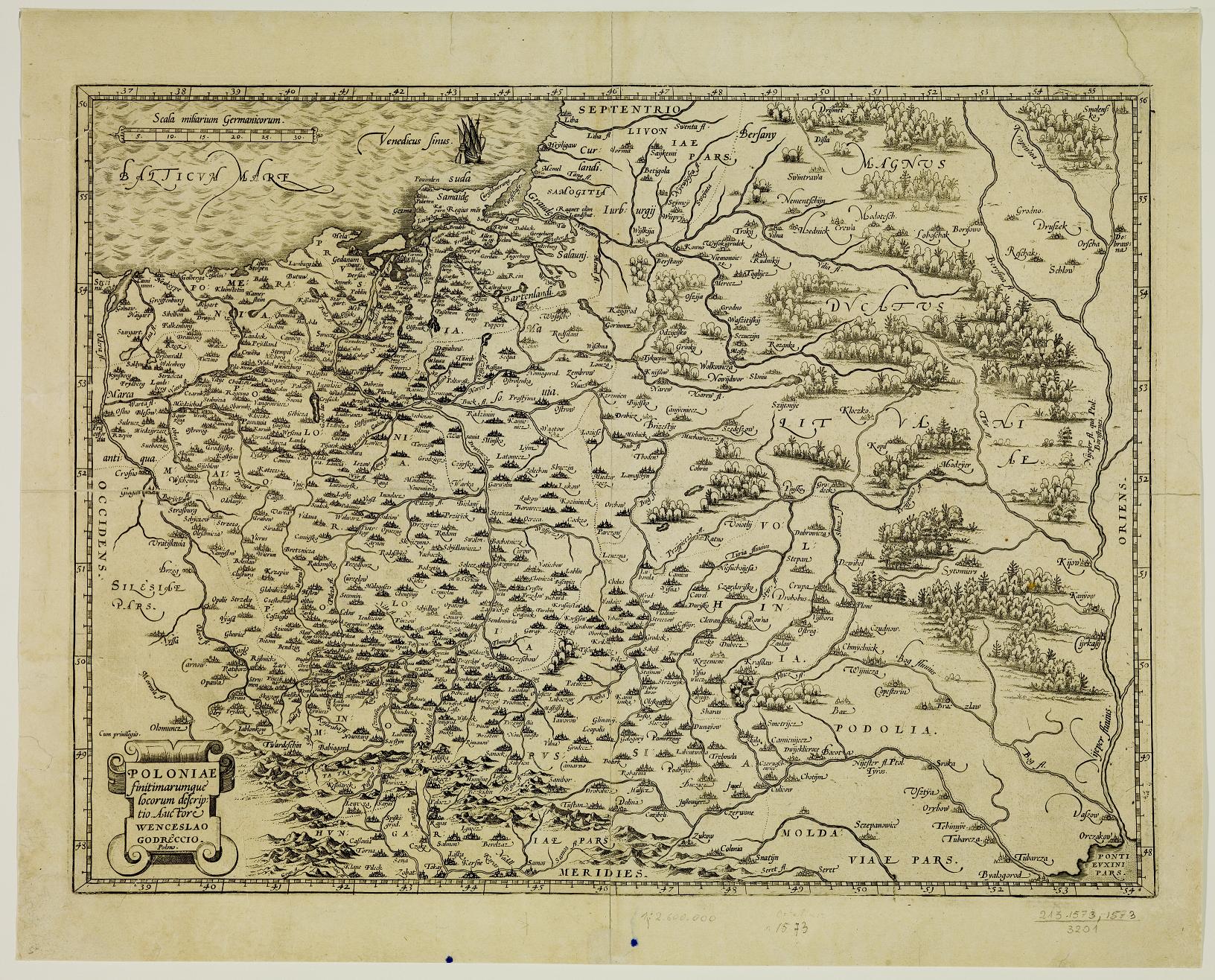From Sarmatia to Arcadia – mythologisation of space in noble culture
A space that is important for a given society is associated with positive features only. This was the case of Sarmatia, which was described as Arcadia in the literature of 16th to 18th centuries. Arcadia could have a double origin: Antique (the golden age introduced by Ovid and the idyll in Virgil's writings) as well as biblical (the promised land motif). Sarmatia started to be described as Arcadia already in Renaissance literature – the land of milk and honey, abundant in food and fertile soil, and free of any dangers. Vast open space symbolised the liberty of the Sarmatian nation, while Sarmatia became the mythical land of freedom.
Sarmatia's natural borders – determined by the sea (the Baltic) and mountains (the Carpathians) constituted an additional protection against enemies. They underwent the process of mythologisation: they delimited the internal, familiar and safe world and at the same time they were a safeguard against external dangers. The world outside those borders was alien and dangerous. Its language, customs and religion were foreign. Sarmatia was the land of idyllic life. It guaranteed access to food, stability and safety.
Similar was the case with the space of respective noble families. Family nests were the Arcadian idyllic space and praise of the rural lifestyle. Sometimes, the space belonging to a given family was even included among this family's titles, especially in the case of magnate families. This was done in order to manifest the family's belonging to the Commonwealth in contacts with foreigners or during foreign trips.
Family nests were not acquired or a legacy, rather they were inherited from the father together with the right of preemption in the case of acquisition by a third party. Families did their best to keep those lands for themselves, even though they were often not worth much financially. In late 18th century, Julian Ursyn Niemcewicz wrote about his littler homeland: There were neither streets nor English flowerbeds. Very few fruit trees, a number of quarters with box, southernwood, sage, rue, iris and other flowers and bushes. [...] By the corner of the house, there was a pear tree; for us, it was a nuptial day when the fruit was shaken off the tree. Unfortunately, like other European states, my native village has completely changed its appearance. The old house was demolished, the pear tree was cut down, as it had dried of age, and the garden, lawns and yard were ploughed. My father constructed a brick palace, but both he and us, we were happier in the old wooden one.
Family property was treated sentimentally, but efforts were taken to maintain keep it in the family because of competition between respective families, especially magnate families. Acquiring certain lands made it possible to prolong the history of a family's nobility.
Mythologisation of space is also presented in the 1511 story about Sławobój – progenitor of the Orzelski family, who settled down in Orzeł. There, he made his nest, but the subsequent history of the family is unknown. No trace remains of Sławobój, apart from two pear trees that he was supposed to have planted in the garden and that I saw, as a boy, rotten and fallen; at my father's times, as long as they were supported, they yielded much fruit, which was called Sławobój's pears. This is how a fragment of space grew to the rank of a symbol – the crops of fertile soil were named after the oldest ancestor.
Arcadian descriptions of family lands were left by Jan Kochanowski in his descriptions of Czarnolas, which he called the family nest in his poetry. 16th century poets discovered the happiness, peace and simplicity of rural life, which was reflected in rustic motifs in Baroque poetry. Wespazjan Kochowski in his poem "Gniazdo ojczyste" (“Native nest”) wrote that leaves in the forests of the Świętokrzyskie Mountains are evergreen. Idealisation of space that does not yield to the laws of nature is a way of its sacralisation. The poet consecrated it by mentioning the Catholic cross put up on the top of a hill by former inhabitants of those lands. The top of the hill offers a beautiful view of the neighbourhood, which is handed down from generation to generation, like the coat of arms. The horizon is that which is familiar – one's own family nest to which the family is tied forever. Inheriting family land is a noble value.
A small part of patrimony grows to the rank of precious space in the accounts of Jerzy Ossoliński. In his memoirs he wrote that as a result of division of family property, he received Ossolin, which made him very happy as, despite having little financial value, the land had been the nest of his ancestors for hundreds of years: it pleased me the that I remained in the nest of my ancestors, where God had blessed and multiplied them for so many ages and that I received the land where my father's bones would rest, and where I would experience so much blessing.
Rural happiness and Arcadia isolated a nobleman from all the evil outside the borders of his land, but also from his duties (political and military). Thus, it was a Sarmatia in the family perspective, which brought happiness – ensured food and safety, but which also had to be defended. Mythical family space was utilised both financially and politically. It was associated with a huge emotional load. The same as Sarmatia, whose safe borders the sphere of the community of nobility, family nests mapped the space of the community of a family.
Translation: Lingua Lab




